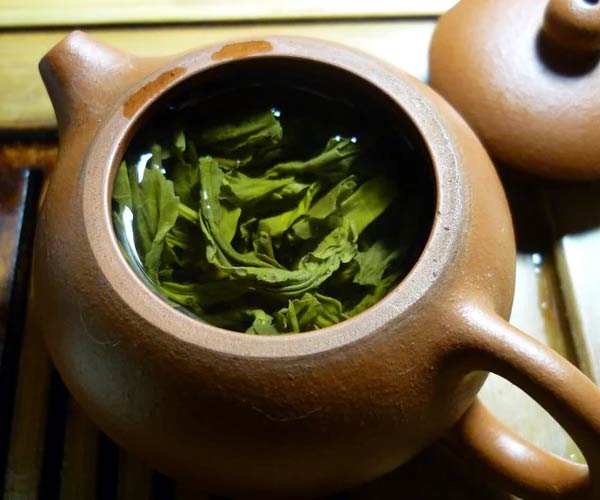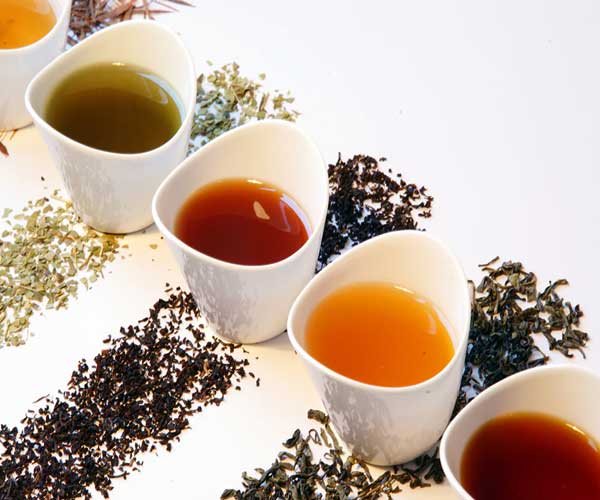Before I start telling you how to make tea, let me tell you one thing: everyone has different tastes and if you have your own way of preparing it that you like best, please stick with it.
In this article, I'll discuss the many little things that make tea perfect and transform every tea into a ceremony, an experience. Whether you're a beginner or an avid tea drinker for years, here you'll learn everything you need to enjoy the perfect tea.
The optimal preparation of tea – How to get the perfect tea every time
Tea preparation is an art that many tea masters in Asian countries have studied for many years. Of course, we'll keep it a bit brief here, and I promise you, it won't take years until you can enjoy a perfect, freshly brewed tea if you follow a few basics.
Especially when switching from tea bags to loose tea, there are a few things to consider, as it is difficult to compare one with the other.
How to prepare loose tea
Before we dive deeper, let’s start with a few basics:
- Preheat your teapot and cup so your tea stays hot longer and doesn't cool down quickly. Simply pour a little hot water into your teapot and cup, swirl it around a bit, and then pour it out.
- Use fresh, filtered water if possible.
- Please do not boil water once it has been boiled a second time.
- The amount of tea leaves varies depending on the preparation method.
The brewing time, the amount of tea, and the water temperature all have a significant influence on the flavor. Depending on how long you let your tea brew, the components extracted from the tea leaves by the water vary.
There are basically two ways of preparing tea, which I would like to introduce to you here:
Gong Fu – The Eastern way of tea preparation
For the Gong Fu method of preparation, you use a small teapot, which is first poured with hot water to preheat it. The most common teapots for this type of preparation are a Gaiwan or the clay-fired Yixing teapots , but handleless tea bowls called Chawan are also used.
Once the vessel is warmed up, the required amount of tea is added, usually a little more than half the capacity. Before brewing the tea, however, we first wash it by pouring hot water over the tea leaves and then immediately pouring it back out.
Once this is done, the pot is filled with hot water again.
After a short time, the tea is ready and is either poured into the tea cups or placed in a decanter beforehand to then fill the tea cups.
This preparation allows the tea to be brewed several times and it is said that the second infusion is the most aromatic.
The western preparation of tea
The Western or European method of tea preparation is the one we are familiar with and most commonly use. This method uses far fewer tea leaves, but allows them to steep longer before drinking. This extracts as many flavors as possible from the leaves.
Making tea in a teapot
The easiest way to brew tea is to use a suitable teapot or a large mug with a large tea strainer. The tea strainer allows you to control and complete the brewing process. When using tea strainers, be careful not to use those small tea balls, as these don't give the loose tea leaves enough space to develop their flavor.
Many tea enthusiasts will curse me now, but a French press is also excellent for brewing loose tea. But if you ask me, nothing beats a traditional Chinese teapot. The feeling of brewing, the feel, and, last but not least, the story behind the teapot make tea a special experience.
In our shop you will find truly unique, handcrafted pieces by Chinese pottery masters, some of which have been passed down through generations.

How to prepare loose tea
If you want to make tea preparation as simple as possible, there are just five components: preparation method, water, water temperature, brewing time and type of tea.
Brewing tea extracts flavors and nutrients from the tea leaves, which vary depending on the amount of tea leaves, the temperature, and the brewing time. But which method is the right one? Should I brew my tea simply? Or should I use the Gong Fu method?
The good answer is: There's no right or wrong; you decide how you want to prepare and drink your tea. There are just a few rules that will help you brew a better, perfect cup of tea.
The water for your tea
Just as important as a good tea is good water; fresh spring water is best. Tap water in most German regions has a very high mineral content or is very calcareous, which can affect the delicate tea.
The best way to avoid this is to use a standard water filter. These don't filter out all the minerals, but leave behind small particles, perfect for your tea.
Water temperature and brewing time of the tea
Here we come to different types of tea, which also prefer different brewing times and water temperatures.
Green tea, for example, prefers water around 70 degrees Celsius. The special flavors are better preserved at these slightly lower temperatures. You'll reach this water temperature approximately 3-4 minutes after boiling.
Black tea is not as delicate as green tea and requires a higher temperature; around 95 degrees is just right, so you can pour the water over the tea immediately after boiling.
The right water temperature can be crucial for the quality of your tea and its characteristic properties.
The type of tea determines the amount
The question of how much tea you should use and how long you need to let the tea brew also depends on the size of the leaf.
Smaller cuts have more surface area and are brewed faster, so they require a shorter brewing time and a smaller amount of tea.
With larger leaves you will need a larger amount and you will have to let them steep for longer.
Don't rely on your eyes or the number of teaspoons; if you want to enjoy your tea at its best, use a kitchen scale. 2-2.5g of tea is ideal for a standard teacup.
But again: please don't stress! You should enjoy your tea. Experiment a little and decide for yourself how you like your tea best.
- The more tea you use, the stronger the taste of the tea becomes
- The fresher the tea, the better the aromas
- The longer you let the tea brew, the more intense the taste becomes
- The hotter the water, the shorter you need to brew the tea
To make things easier for you in everyday life, here are some temperatures and other information for the perfect tea if you want to drink it the European way.
For all those who would like to enjoy their favorite tea in a tea ceremony, I have written another detailed article here.
I hope this post has given you a little insight into the world of tea making. If you have any questions, please leave a comment or send me a message via the contact form. I will personally read every email and respond as quickly as possible.




Leave a comment
This site is protected by hCaptcha and the hCaptcha Privacy Policy and Terms of Service apply.